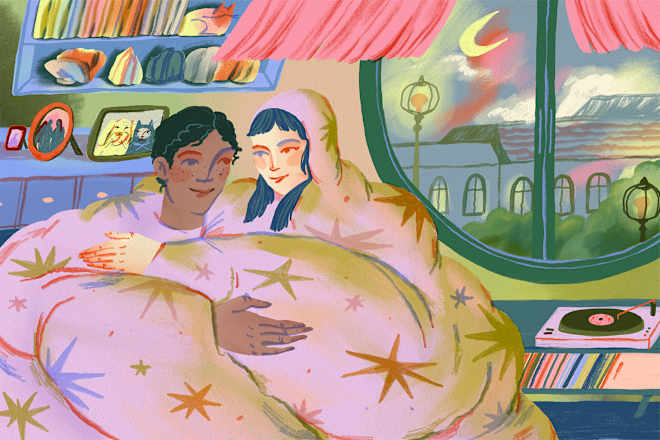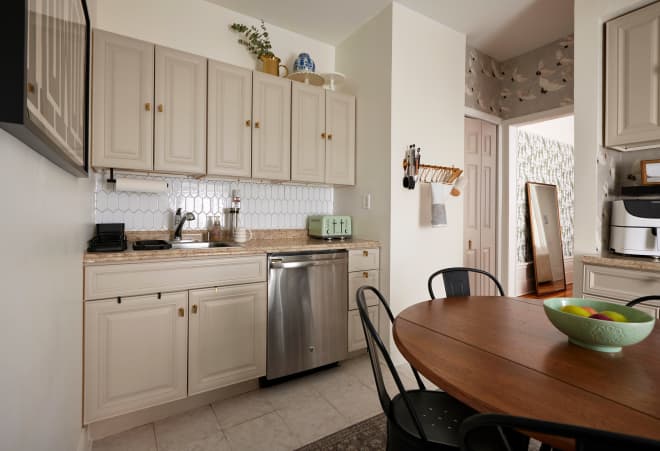Avant-Garde Interiors: Lessons from Modern Art in Home Design
Imagine walking into a home where every corner feels like a curated gallery—a space where functionality dances with whimsy, and geometric shapes flirt with dreamlike illusions. This isn’t just about filling rooms with furniture; it’s about weaving art history into the very fabric of your living space. The avant-garde movements of the 20th century—Bauhaus, Surrealism, . . .
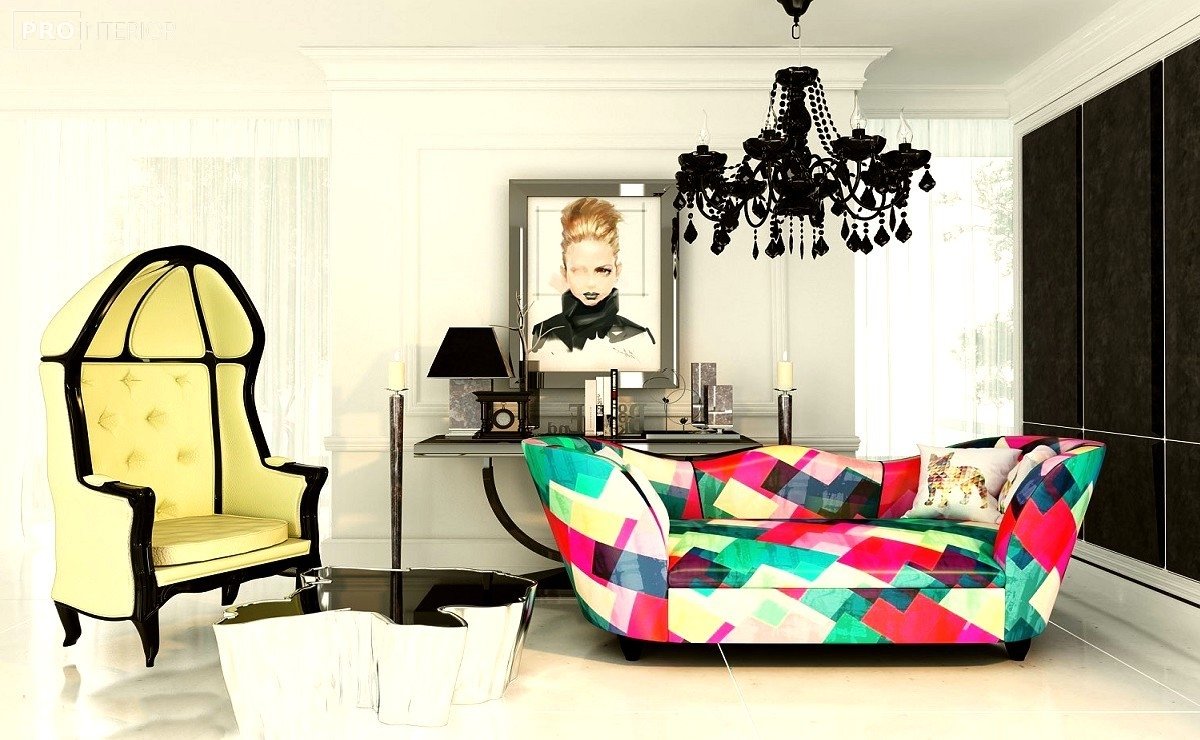
Imagine walking into a home where every corner feels like a curated gallery—a space where functionality dances with whimsy, and geometric shapes flirt with dreamlike illusions. This isn’t just about filling rooms with furniture; it’s about weaving art history into the very fabric of your living space.
The avant-garde movements of the 20th century—Bauhaus, Surrealism, and Cubism—aren’t confined to museums. Their DNA lives on in modern interiors, offering subtle yet transformative ideas for those brave enough to rethink their décor. Let’s explore how these movements can inspire your home, one brushstroke at a time.
What Is Avant Grade Interiors?
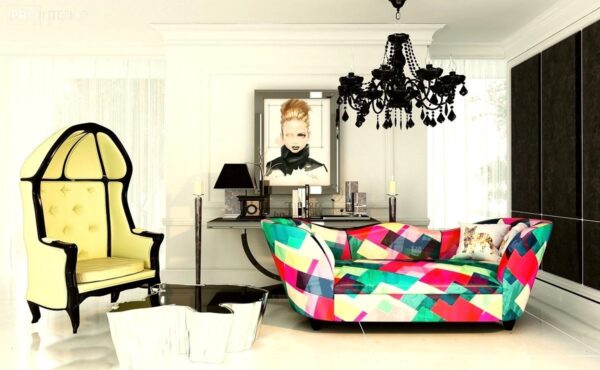
Avant-garde interiors are all about breaking the rules and challenging the norm. The term “avant-garde” comes from the French word meaning “advance guard,” and it’s used to describe ideas, art, or designs that are ahead of their time.
Unlike classic or minimalist interiors, avant-garde design isn’t about playing it safe. It thrives on unexpected shapes, striking contrasts, unusual materials, and a sense of movement that makes a space feel unique and thought-provoking.
Bauhaus: The Beauty of Functionality
The Bauhaus movement, founded in 1919 by Walter Gropius, was a radical departure from the ornamental excesses of previous design styles. Instead of decoration for decoration’s sake, Bauhaus focused on functionality, simplicity, and craftsmanship. This was the era when architecture and design became streamlined, prioritizing clean lines, geometric forms, and an honest use of materials.
1. Minimalism with Purpose
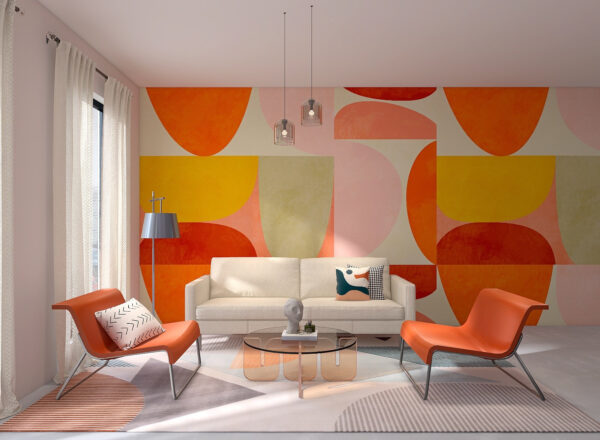
Bauhaus interiors are not about stark emptiness, but about stripping design down to its essentials. A Bauhaus-inspired home avoids unnecessary embellishments, ensuring that each piece of furniture or décor has a clear function.
For a contemporary take, consider a sleek, modular sofa with a streamlined silhouette, or a dining table with a simple wooden top and metal legs. The key is to prioritize function while maintaining elegance.
Famous pieces like the Barcelona Chair by Ludwig Mies van der Rohe or the Wassily Chair by Marcel Breuer are iconic examples of functionality and beauty blended together.
2. A Restrained Yet Impactful Color Palette
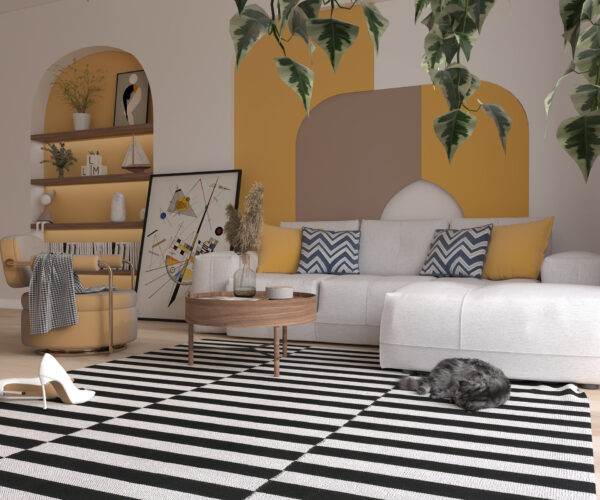
Bauhaus interiors typically use a neutral color palette, with whites, blacks, and grays forming the backdrop. These minimalist tones allow individual design elements to take center stage. However, this doesn’t mean the space has to feel cold or sterile. Bauhaus interiors often incorporate pops of primary colors—red, blue, and yellow—to add vibrancy and visual interest.
For example, a red chair or a yellow lamp could provide a striking contrast against a neutral sofa and white walls. Or you could use primary-colored abstract art pieces on the walls to inject energy into the room without disrupting the clean lines of the space.
3. Industrial Materials as Art
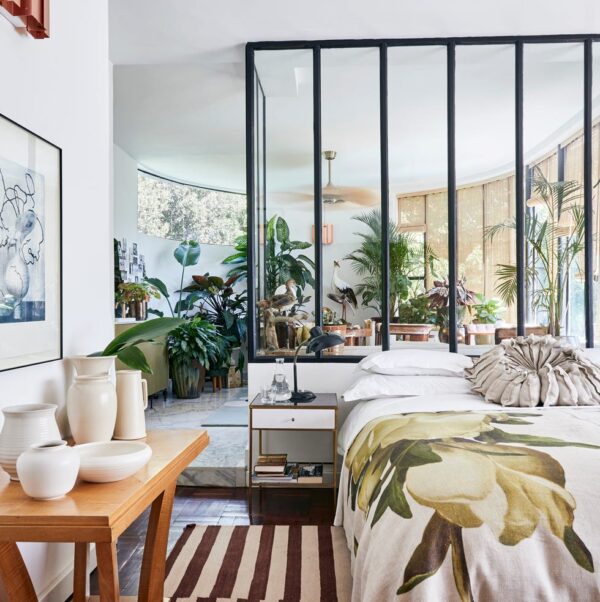
Bauhaus was revolutionary not only in its design philosophy but also in its use of materials. The movement embraced industrial materials like steel, glass, concrete, and plywood, using them in ways that celebrated their raw, unrefined qualities. These materials became central to creating modern, functional spaces, and they continue to be widely used in contemporary design today.
Incorporating industrial materials into your home can be as simple as leaving exposed steel beams, concrete floors, or brick walls visible. These elements celebrate the material’s inherent beauty and serve as a nod to Bauhaus’s love of honest construction.
4. Open, Airy Spaces
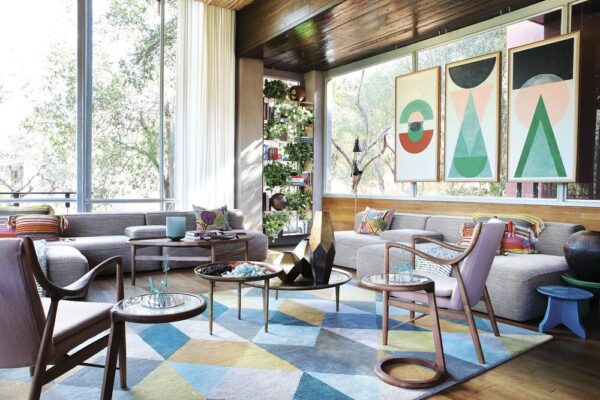
Bauhaus interiors are known for their open and airy layouts. The movement championed a functional flow between spaces, where rooms are designed to be interconnected, allowing for efficient movement and use of space. The concept of open floor plans was embraced, with the idea of maximizing the use of natural light and ensuring the furniture didn’t disrupt the flow of the room.
Bauhaus designers also valued natural light as an essential element of interior design. Large windows, open spaces, and light-colored walls helped to reflect and amplify daylight, making interiors feel bright and expansive.
For example, in the living area, a modular sectional sofa can act as a room divider while still maintaining a sense of openness. Glass partitions or low-profile furniture can further enhance the flow between spaces without feeling too enclosed.
Surrealism: Let Your Imagination Run Wild
If Bauhaus is about order and function, Surrealism is its polar opposite. Emerging in the 1920s, Surrealism was all about tapping into the subconscious, exploring dreams, and embracing the bizarre. Artists like Salvador Dalí and René Magritte created works that were whimsical, thought-provoking, and often a little unsettling. While Surrealism might seem too abstract for home design, its principles can inspire interiors that are playful, imaginative, and deeply personal.
1. Juxtaposition: Unexpected Pairings
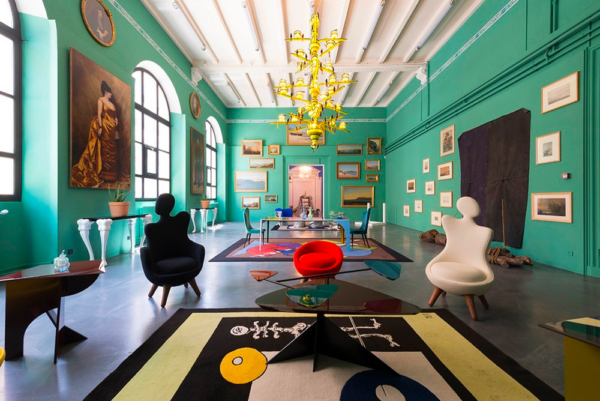
Surrealism thrives on the unexpected. Think of Dalí’s melting clocks or Magritte’s floating apples—these are images that challenge our perceptions. In your home, you can create a similar sense of surprise by pairing elements that don’t traditionally go together. For example, imagine a vintage chandelier hanging in a modern, industrial kitchen.
Or picture a sleek, minimalist living room with a classical, ornate mirror as the focal point. Another way to play with juxtapositions is through texture. Pair a plush, velvet sofa with a rough, concrete coffee table, or hang a delicate, lace curtain against a rugged, exposed brick wall.
2. Use Dreamy Colors
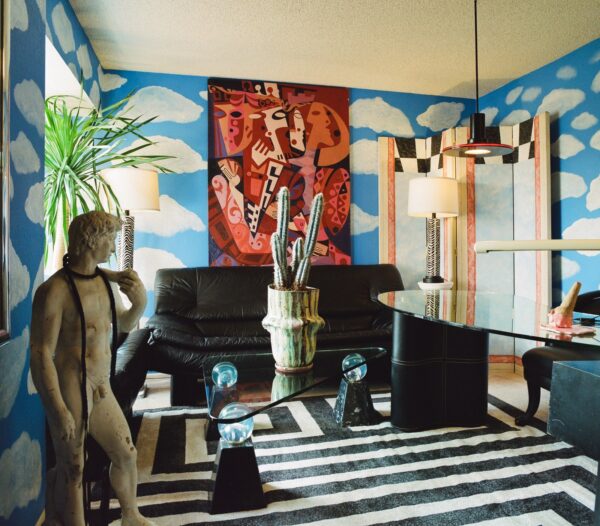
Surrealist art often has this dreamy, almost hazy quality to it. Think soft blues, pinks, and golds that feel like they’ve been pulled straight out of a dream. You can bring that same vibe into your home by using a palette of pastel colors—like blush pink, mint green, lavender, or pale peach.
Pair these soft tones with metallic accents—like gold or silver—to add a bit of sparkle. Or, if you want to make things more interesting, throw in a pop of bold color, like a bright red cushion or a deep blue vase.
Soft, diffused light—like from fairy lights, paper lanterns, or a dimmer switch—can make a room feel dreamy and magical. Mirrors are another great trick—they reflect light and make spaces feel bigger, almost like you’re stepping into another world.
3. Optical Illusions and Trompe-l’œil
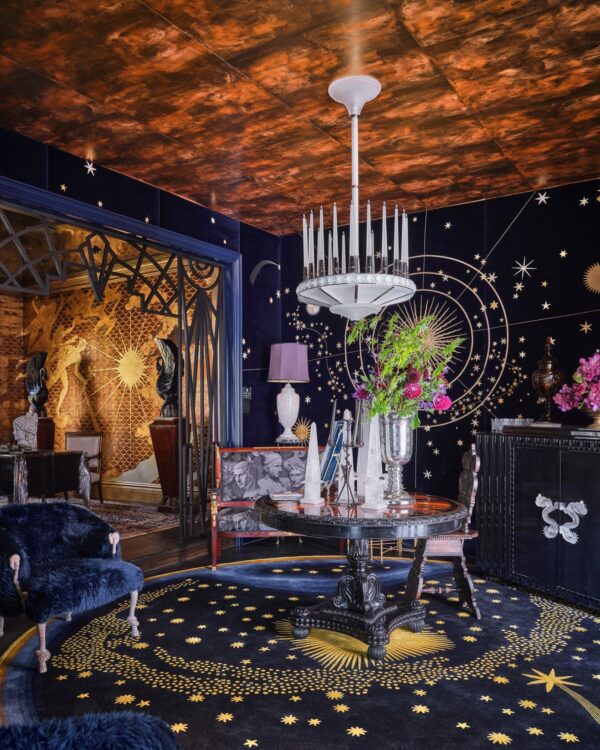
One of the easiest ways to bring a touch of Surrealism into your home is by playing with optical illusions and trompe-l’œil (which literally means “trick the eye”). A mural depicting an imaginary landscape, a seemingly endless hallway, or a bookshelf filled with objects that don’t exist can transform a plain wall into a surreal masterpiece.
A cleverly placed window illusion can make a small room feel larger, while architectural trompe-l’œil can add depth to flat surfaces. Mirrors are another great tool. Place them in unexpected spots to reflect things in unusual ways, making rooms feel bigger or even distorted.
4. Personal Symbolism
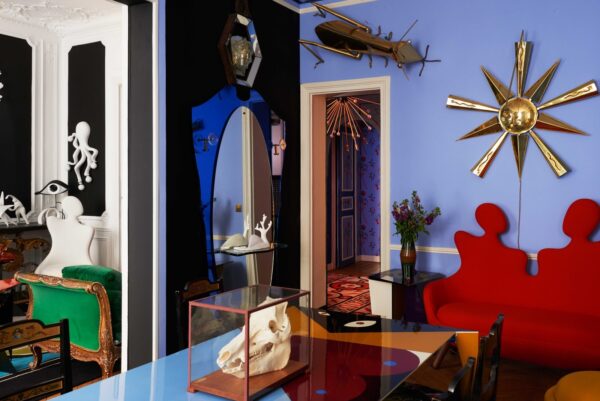
Surrealism is deeply personal, often incorporating symbols and motifs that hold special meaning for the artist. In your home, consider incorporating objects, artwork, or colors that resonate with your own experiences and memories. This could be a painting that reminds you of a favorite vacation or a collection of items that tell a story about your life.
You can also use Surrealism to explore themes of transformation and metamorphosis. For instance, a butterfly motif could symbolize growth and change, while a mirror could represent self-reflection and introspection.
5. Add Whimsical Touches
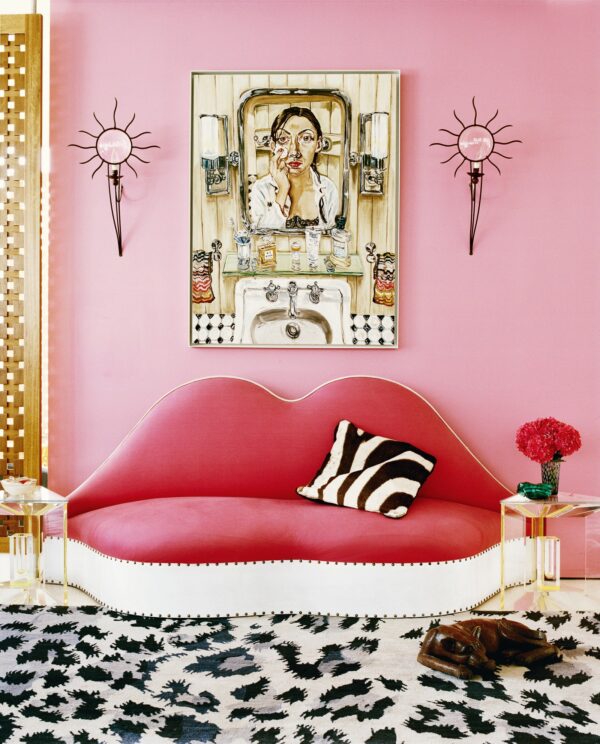
Surrealism is all about embracing the weird and wonderful, so don’t be afraid to add some quirky, unconventional pieces to your home. Look for decor that makes you smile or sparks your imagination. Maybe it’s a chair shaped like a hand, a lamp that looks like a tree, or a coffee table with an asymmetrical, sculptural design. These kinds of pieces add personality and make your space feel playful and fun.
Artwork is another great way to bring in some Surrealist vibes. Look for pieces that feature dreamlike imagery—like floating objects, distorted figures, or impossible landscapes. The key here is to choose pieces that feel personal to you. Maybe it’s a painting that reminds you of a favorite book or a sculpture that makes you think of a childhood memory.
Cubism: Breaking Down Boundaries
Cubism, the groundbreaking art movement pioneered by Pablo Picasso and Georges Braque in the early 20th century, shattered traditional ideas of perspective and form. By breaking objects into geometric shapes and presenting multiple viewpoints at once, Cubism challenged how we see the world.
While it might sound like a complex art style to bring into your home, the principles of Cubism can actually inspire interiors that are dynamic, layered, and full of personality. Here’s how you can incorporate Cubist vibes into your space in a way that feels natural and stylish.
1. Embrace Geometric Shapes
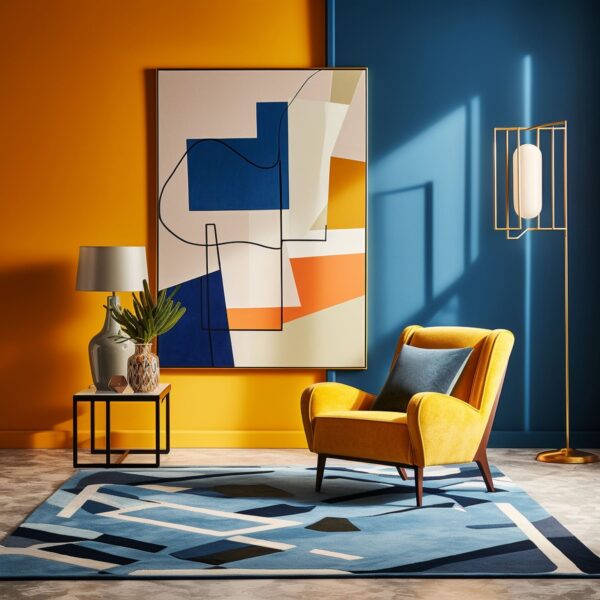
Cubism is all about breaking things down into geometric forms—think squares, triangles, circles, and rectangles. You can bring this idea into your home by choosing furniture and decor with strong, angular lines. For example, a coffee table with a hexagonal shape, a bookshelf with asymmetrical cubbies, or a rug with a bold geometric pattern can instantly give your space a Cubist feel.
Don’t be afraid to mix and match shapes, either. A round mirror paired with a rectangular console table or a triangular side table next to a square sofa creates visual interest and keeps the eye moving around the room.
2. Layer Textures and Patterns
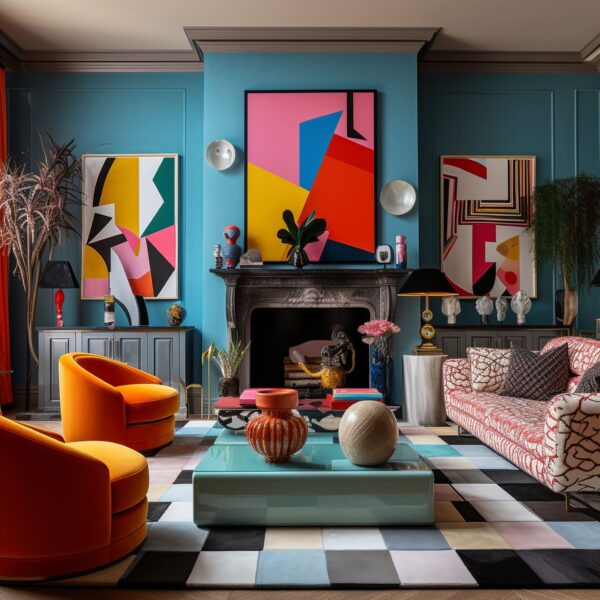
Cubist paintings often feature a mix of textures and patterns that overlap and interact in unexpected ways. You can recreate this effect in your home by layering different materials and prints. For example, pair a geometric-patterned rug with a textured throw blanket and a mix of cushions in varying fabrics.
When it comes to patterns, think bold and graphic. Stripes, chevrons, and abstract designs work well in a Cubist-inspired interior. Just make sure to balance the busyness with solid colors or neutral tones to keep the room from feeling chaotic.
3. Use a Monochromatic Palette with Pops of Color
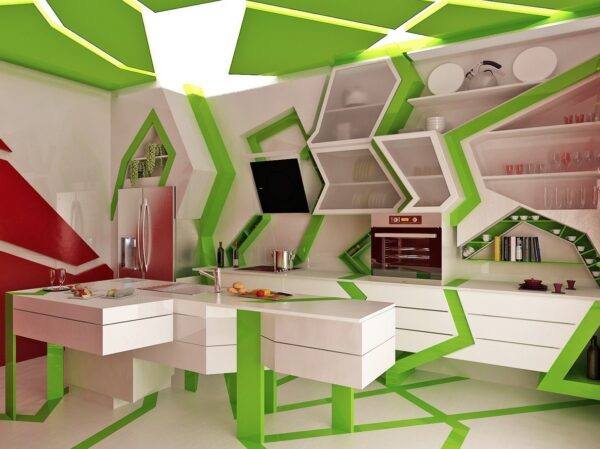
Many Cubist paintings are monochromatic, with subtle variations in tone and occasional bursts of color. This approach can be applied to modern interiors by using a neutral base—like shades of gray, beige, or white—and adding pops of color through artwork, accessories, or accent walls. For example, a gray living room with a bright yellow armchair or a white kitchen with a bold blue backsplash creates a sophisticated yet lively atmosphere.
If you’re feeling adventurous, you can also experiment with color blocking—painting walls or furniture in solid, geometric sections of contrasting colors. This technique is a direct nod to Cubism and adds a bold, artistic touch to any room.
4. Incorporate Abstract Art
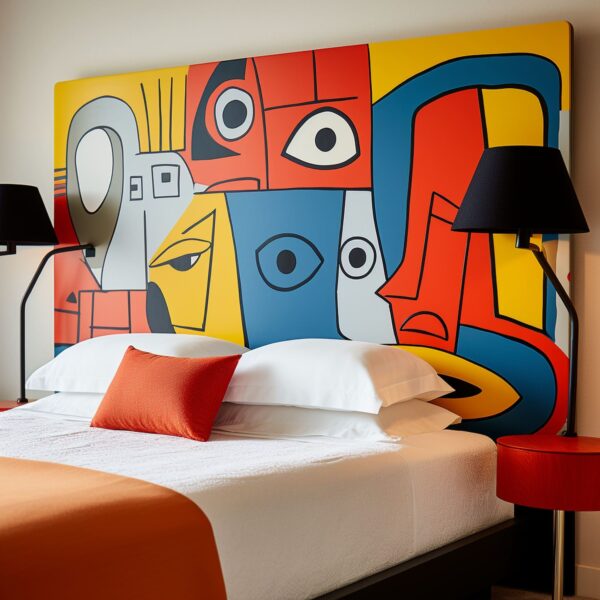
Art is one of the easiest ways to bring Cubism into your home. Look for pieces that feature fragmented forms, overlapping shapes, and abstract compositions. You don’t have to invest in an original Picasso—there are plenty of affordable prints and reproductions that capture the spirit of Cubism. Alternatively, you could create your own abstract artwork by collaging images or painting geometric designs.
When hanging art, consider creating a gallery wall with a mix of Cubist-inspired pieces and other abstract works. The variety of shapes, colors, and styles will create a visually dynamic display that feels cohesive and intentional.
Finishing Notes
At Home Designing, we believe that interiors should inspire and reflect the creative spirit of those who live in them. Whether you’re looking for small ways to introduce avant-garde elements or considering a complete transformation, our platform offers endless inspiration for those who want to push the boundaries of home design.
Ready to take your space to the next level? Explore more bold, artistic, and innovative interior ideas at Home Designing!

















_Agata_Gładykowska_Alamy.jpg?#)



































